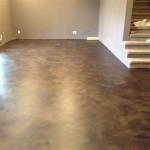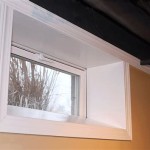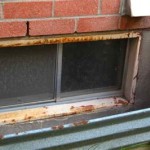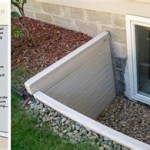Acceptable Levels of Radon In Basement
Radon is a naturally occurring, colorless, odorless, and tasteless radioactive gas formed from the decay of uranium in soil, rock, and water. It can seep into buildings through cracks and other openings in the foundation. Basements, being in direct contact with the ground, are particularly susceptible to radon accumulation. Prolonged exposure to elevated radon levels increases the risk of lung cancer, making it a significant public health concern. Understanding acceptable radon levels and mitigation strategies is crucial for home owners and building managers.
While radon is present in the air everywhere, indoor concentrations can vary significantly depending on factors such as soil composition, building construction, ventilation, and climate. The Environmental Protection Agency (EPA) has established guidelines to help property owners assess and address radon levels in their homes and buildings. These guidelines focus on identifying action levels that warrant mitigation measures to reduce radon exposure.
EPA Guidelines and Action Level
The EPA recommends taking action to reduce radon levels in homes if the radon concentration is at or above 4 picocuries per liter (pCi/L) of air. This level is considered the 'action level.' While there is no safe level of radon, the EPA's action level represents a balance between the health risks associated with long-term radon exposure and the feasibility of implementing effective mitigation strategies. It is important to note that even levels below 4 pCi/L still pose a risk, and the EPA recommends considering mitigation measures if the levels are between 2 pCi/L and 4 pCi/L.
The choice of 4 pCi/L as the action level is based on risk assessments that estimate the likelihood of developing lung cancer from long-term radon exposure at different concentrations. The EPA estimates that approximately 21,000 lung cancer deaths in the United States each year are related to radon exposure. The risk is significantly higher for smokers, as the synergistic effect of radon and smoking dramatically increases the probability of developing lung cancer.
It is essential to interpret radon test results accurately and understand the associated risks. A single test result above 4 pCi/L should prompt further investigation and mitigation. Long-term testing, conducted over several months, provides a more accurate representation of the average radon level in a building, as short-term fluctuations can occur due to variations in weather patterns, soil moisture, and ventilation.
Measurements of radon levels are typically performed using either short-term or long-term testing devices. Short-term tests, lasting from two to seven days, provide a quick indication of radon levels. Long-term tests, conducted for 90 days or more, offer a more comprehensive picture of the average radon concentration over an extended period. Activated charcoal canisters and alpha track detectors are common types of radon testing devices used in homes and buildings.
Factors Influencing Radon Levels in Basements
Several factors can influence the amount of radon that enters a basement. The composition of the soil surrounding the foundation is a primary determinant. Soils with higher concentrations of uranium are more likely to produce higher levels of radon gas. Granite, shale, and phosphate rock are examples of geological formations that can contribute to elevated radon levels.
The construction of the basement itself plays a significant role. Cracks in the foundation walls and floor, gaps around pipes and wiring, and porous building materials can all provide pathways for radon to enter the building. Air pressure differences between the inside and outside of the building also contribute to radon infiltration. Lower air pressure inside the building, often created by heating and cooling systems, can draw radon gas from the surrounding soil into the basement.
Ventilation is another crucial factor. Poorly ventilated basements tend to accumulate higher concentrations of radon gas. Natural ventilation through windows and doors can help reduce radon levels, but this may not be sufficient in many cases, particularly during colder months when windows are typically closed. Mechanical ventilation systems, such as fans and air exchangers, can be used to improve air circulation and reduce radon buildup.
Climate and weather conditions can also affect radon levels. Radon concentrations tend to be higher during the winter months when buildings are tightly sealed to conserve energy. Frozen ground can also prevent radon gas from escaping into the atmosphere, forcing it to enter buildings. Heavy rainfall can saturate the soil, which can temporarily increase radon levels in basements.
Changes in the water table can also influence radon levels. Radon can dissolve in groundwater and be released into the air when the water is used for showering, washing dishes, or other activities. While radon in water is typically less of a concern than radon in air, it can still contribute to overall radon exposure, especially in homes that rely on well water.
Mitigation Strategies for Reducing Radon Levels
If radon levels in a basement are found to be at or above the EPA's action level of 4 pCi/L, mitigation measures should be implemented to reduce the risk of lung cancer. There are several effective radon mitigation techniques available, and the choice of method will depend on the specific characteristics of the building, the radon levels, and the budget of the property owner.
Subslab depressurization (SSD) is the most widely used and generally the most effective radon mitigation technique. This method involves creating a vacuum under the concrete slab of the basement and venting the radon gas safely outside the building. A fan is typically installed to draw the radon gas through a pipe that runs from under the slab to above the roofline, where it is dispersed into the atmosphere. SSD systems are generally effective in reducing radon levels by 50% to 99%.
Sealing cracks and other openings in the foundation can also help reduce radon infiltration. While sealing alone is typically not sufficient to reduce radon levels below the action level, it can be an important component of a comprehensive mitigation strategy. Sealing cracks and gaps can help to reduce air leakage and prevent radon from entering the basement.
Increasing ventilation in the basement can also help lower radon levels. This can be achieved by installing fans to exhaust air from the basement or by improving natural ventilation through windows and doors. However, increasing ventilation can also increase energy costs, as more heated or cooled air is exhausted from the building. Heat recovery ventilators (HRVs) can be used to mitigate this issue by recovering heat from the exhausted air and transferring it to the incoming fresh air.
Another mitigation technique is soil depressurization, which involves creating a vacuum in the soil surrounding the foundation and venting the radon gas to the atmosphere. This method is typically used in crawl spaces or in situations where SSD is not feasible. Soil depressurization systems are similar to SSD systems, but they draw radon gas from the soil outside the building rather than from under the slab.
Radon-resistant new construction (RRNC) techniques can be incorporated into the construction of new homes to prevent radon from entering the building in the first place. These techniques include using a radon-resistant barrier under the slab, sealing cracks and openings in the foundation, and installing a passive subslab depressurization system that can be easily activated if needed. RRNC techniques are generally more cost-effective than remediating radon problems in existing homes.
It is recommended to hire a qualified and certified radon mitigation professional to assess the radon levels in a building and to design and install the appropriate mitigation system. A qualified professional will have the knowledge, skills, and equipment necessary to perform the work safely and effectively. The EPA and state radon programs maintain lists of certified radon professionals.
After a radon mitigation system has been installed, it is important to retest the radon levels to ensure that the system is working effectively. Retesting should be conducted within 30 days of installation and periodically thereafter to monitor the system's performance. Regular maintenance of the mitigation system, such as cleaning the fan and checking for leaks, is also important to ensure its long-term effectiveness.
In addition to mitigation techniques, lifestyle changes can also help reduce radon exposure. Smoking significantly increases the risk of lung cancer from radon exposure, so quitting smoking is the single most effective way to reduce this risk. Improving ventilation in the home and spending more time outdoors can also help reduce radon exposure.
Ultimately, protecting individuals from radon exposure requires a multi-faceted approach involving testing, mitigation, and lifestyle modifications. By understanding the risks associated with radon and taking appropriate action, property owners can create safer and healthier living environments for themselves and their families.

Radon Levels What They Mean Level Is Safe

Acceptable Radon Levels In Home Testing And Remediation Md

Radon Levels Utah Services

Radon An Indoor Health Hazard Mu Extension

Public Facilities Recording Safe Radon Levels My Prince George Now

Radon Testing Chicago Il Protect Environmental

The Do S And Don Ts Of Finishing A Basement Protect Environmental

Radon In Homes Schools And Buildings Us Epa

Preventing Radon Problems In The Home 9 953 Extension

Blog
Related Posts







